Have you ever wondered what life is like for the tireless worker bees that keep our ecosystems functioning? These remarkable insects live highly regimented lives dedicated to the prosperity of their colony. Their daily routine is a masterclass in efficiency, cooperation, and sacrifice. While we humans often complain about our 8-hour workdays, worker bees operate on a relentless 24-hour schedule with barely any rest. This article breaks down a typical day in the life of a worker bee and poses the question: could you handle their demanding lifestyle?
The Dawn Patrol: Early Morning Duties
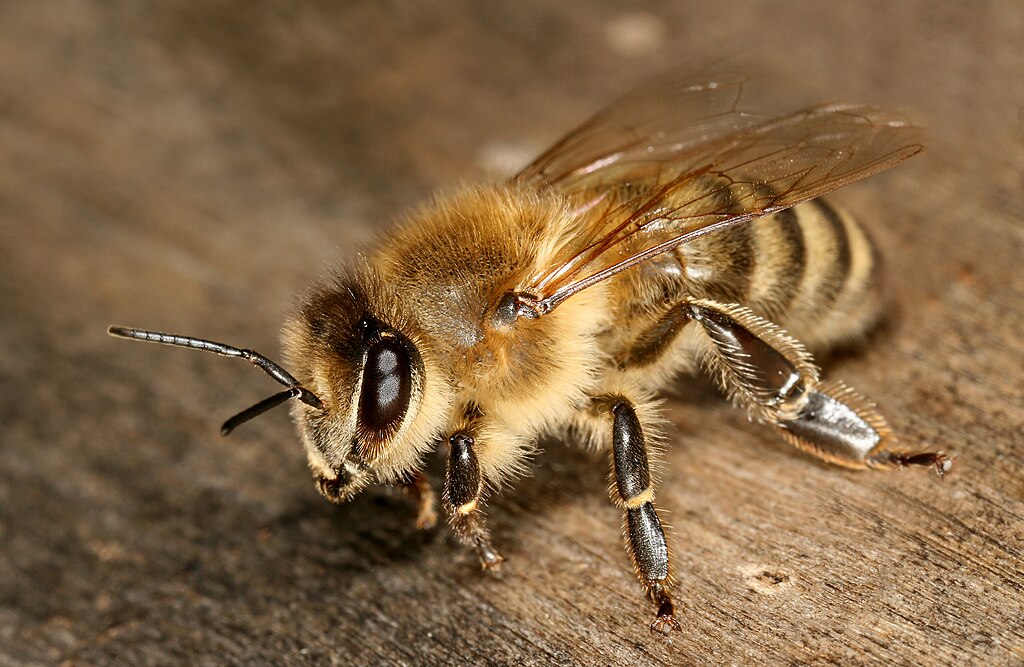
As the first light of dawn breaks over the horizon, worker bees are already stirring within the hive. Their day begins with a thorough self-cleaning ritual, using their specialized legs to remove any dust or debris accumulated during the night. This hygiene practice is crucial as it prevents the spread of diseases within the densely populated hive environment. Following their grooming, they communicate with other bees through a series of movements and pheromones to coordinate the day’s activities. Before venturing outside, they consume some honey to fuel their bodies for the demanding work ahead, converting the carbohydrates into energy that will power their flight muscles.
The First Nectar Collection Shift
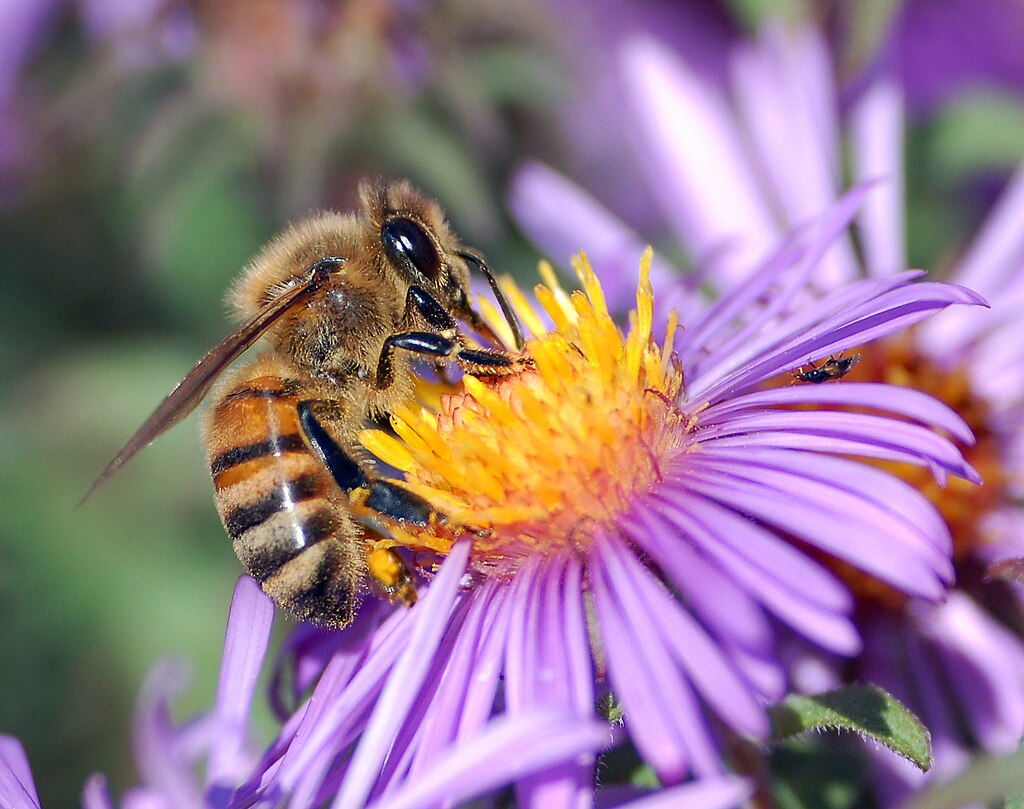
By 6:00 AM, worker bees embark on their first nectar collection shift, flying up to three miles from the hive in search of flowering plants. Each worker can visit between 50 to 100 flowers during a single collection trip, meticulously gathering nectar in their specialized honey stomachs. The precision with which they extract nectar is remarkable – their proboscis (a straw-like tongue) can reach deep into flower structures without damaging delicate reproductive parts. During these morning hours, flowers typically produce the highest nectar yields, making this an especially productive time for collection. A single worker bee will make about 12 trips during this morning shift, carrying approximately half her body weight in nectar and pollen with each return to the hive.
Mid-Morning Hive Maintenance
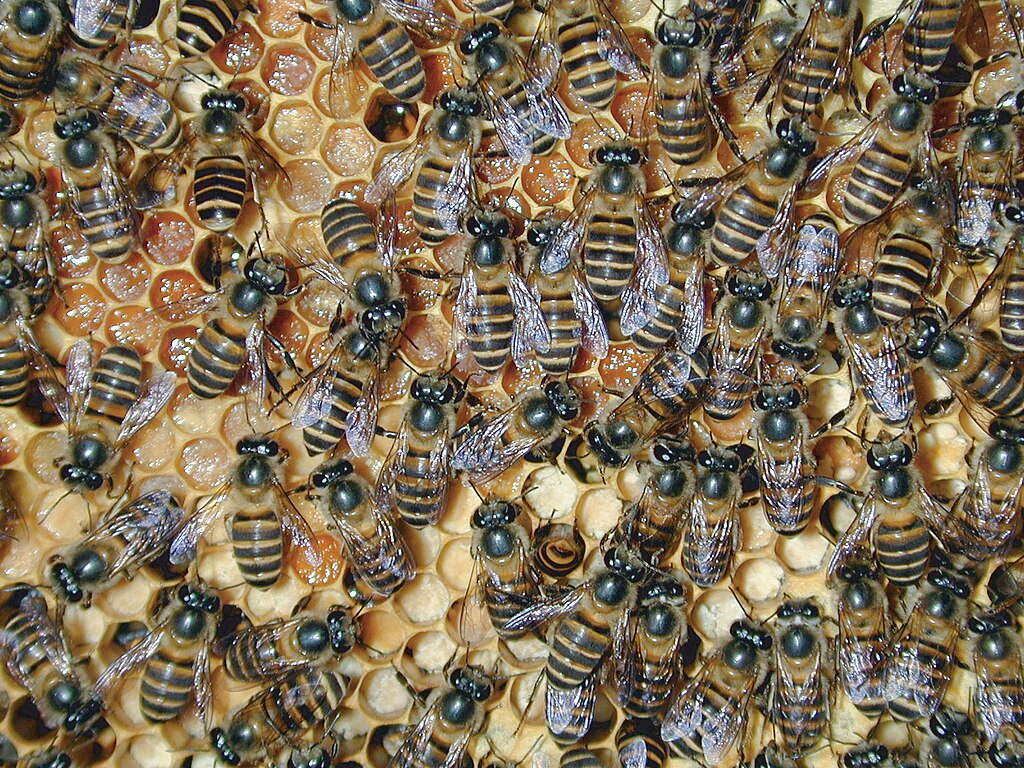
Around 9:00 AM, some worker bees transition to essential hive maintenance duties that ensure the colony’s structural integrity. Using their bodies as living measuring tools, they construct perfectly hexagonal cells from beeswax they secrete from special glands on their abdomens. The precision of this architecture is astonishing – the hexagonal structure provides maximum storage efficiency while using minimal materials. During this time, they also repair any damage to the hive structure that may have occurred from weather, predators, or general wear. Some workers focus on removing debris, dead bees, or other waste materials that could harbor pathogens or attract pests. The temperature inside the hive must be maintained at approximately 95°F (35°C), so workers also engage in thermoregulation by fanning their wings or clustering together depending on external conditions.
Midday Nursing Duties
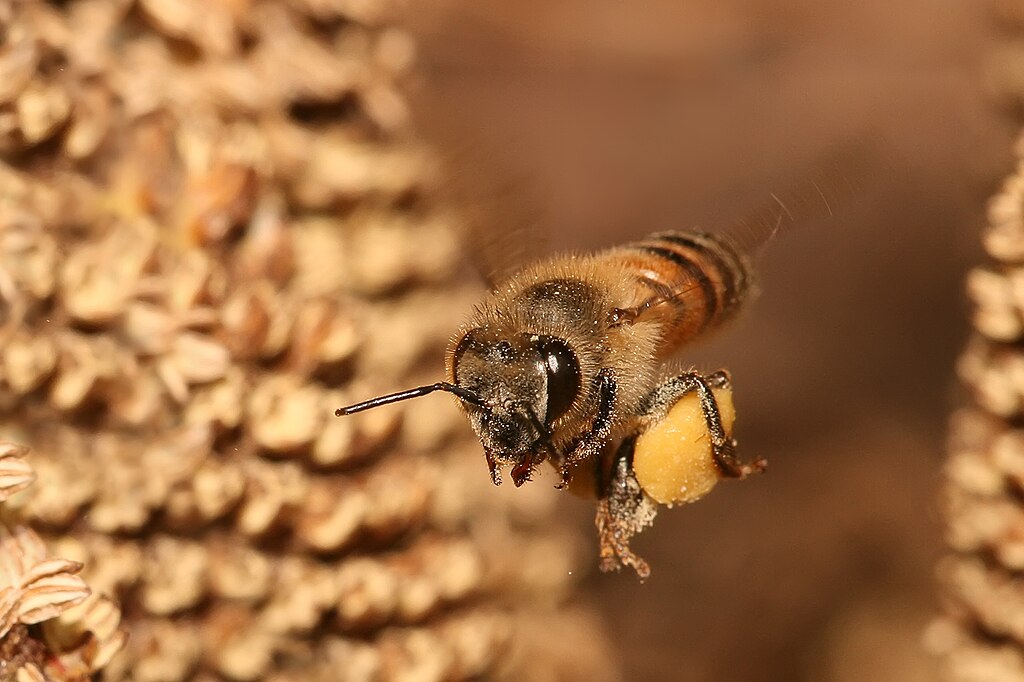
As the day progresses to midday, younger worker bees (typically those under 12 days old) focus on nursing the developing brood. They produce a nutrient-rich substance called royal jelly from glands in their heads, which they feed to all larvae during their first three days of development. After this initial period, only future queens continue receiving royal jelly, while worker larvae receive a mixture of pollen and honey called “bee bread.” Each larva is fed approximately 1,300 times per day, requiring constant attention from the nursing bees. The feeding must be precisely timed and portioned to ensure proper development, with nurse bees checking each cell hundreds of times throughout the day. This intensive care continues until the larvae are ready to pupate, at which point the cells are capped with wax to allow for metamorphosis.
Afternoon Nectar Processing
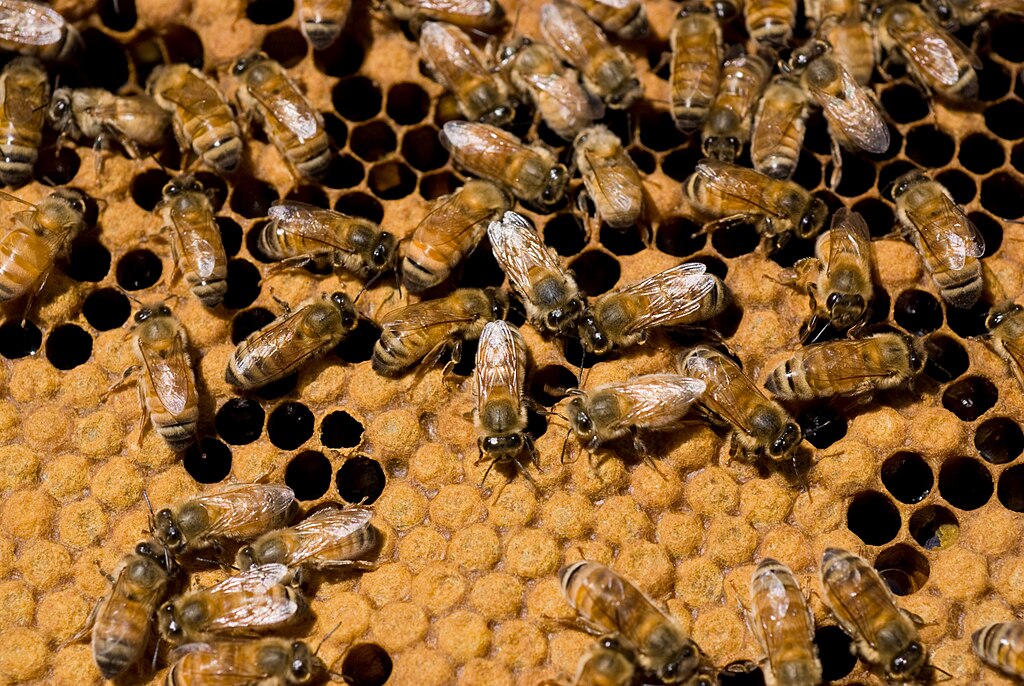
By early afternoon, worker bees that have returned with nectar begin the complex process of converting it into honey. The collected nectar, which contains approximately 80% water, must be reduced to about 18% water content to become shelf-stable honey. Workers pass the nectar from bee to bee, each one adding enzymes that break down complex sugars into simpler ones. After this enzymatic processing, they spread the nectar in thin layers across the honeycomb cells, exposing it to the warm, dry air of the hive. The constant fanning of wings by dedicated ventilator bees accelerates evaporation, gradually thickening the nectar into honey. Once the moisture content reaches the optimal level, the cells are sealed with a wax cap, creating a food reserve that can last indefinitely – a remarkable feat of natural food preservation.
Guard Duty at the Hive Entrance

Throughout the day, especially during peak activity hours, specialized guard bees maintain vigilant security at the hive entrance. These guards are typically older workers who have developed stronger mandibles and higher levels of alarm pheromones. They inspect every returning bee through antennae contact, detecting colony-specific chemical signatures that identify legitimate members. Any intruders – whether robber bees from other colonies, wasps, or other potential threats – are immediately confronted and often forcibly removed. Guard bees work in shifts, with each bee serving approximately 4-8 hours before being relieved by another worker. During times of increased threat, such as when nearby colonies are collapsing or food sources are scarce, the number of guards may double or triple to protect the valuable honey stores.
Late Afternoon Pollen Processing
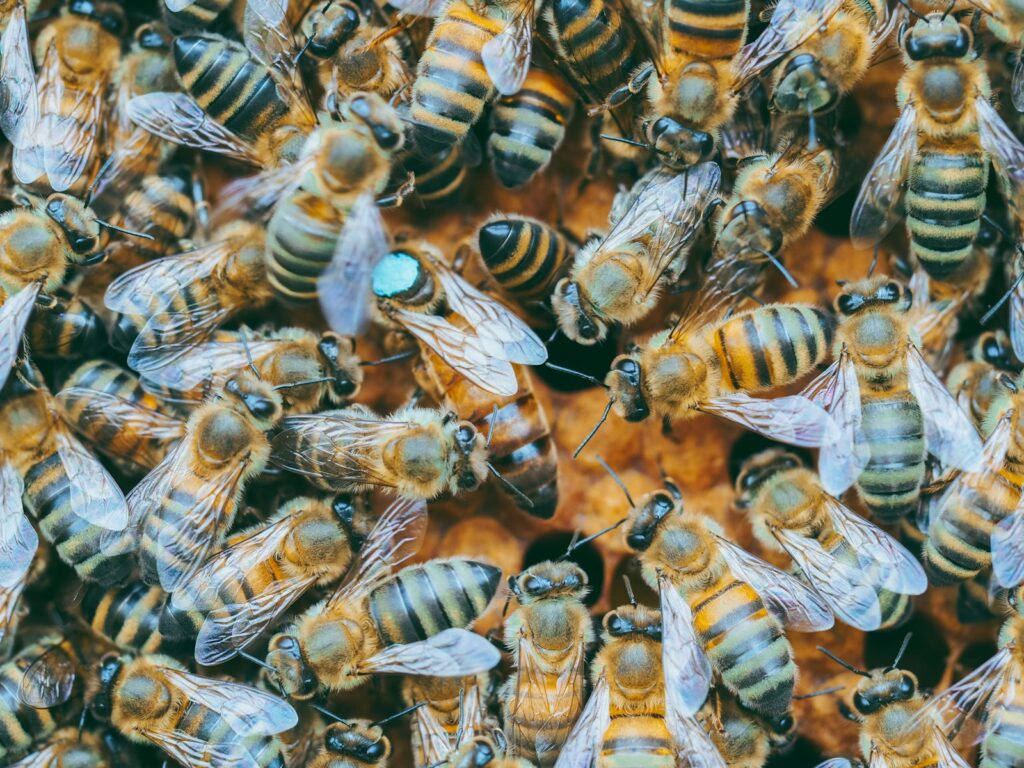
As the day begins to wane, workers focus on processing the pollen collected during foraging trips. Pollen provides the protein, vitamins, and minerals essential for bee development and health. Workers carefully remove pollen from the specialized “baskets” on their hind legs and pack it into cells adjacent to the developing brood. To preserve the pollen and increase its nutritional value, they add nectar and glandular secretions that ferment the mixture into “bee bread.” This fermentation process breaks down the tough outer coating of pollen grains, making nutrients more accessible and extending shelf life. A typical colony requires approximately 44 pounds of pollen annually to sustain itself, necessitating efficient processing systems. The color of stored pollen varies widely – from bright orange to deep purple – depending on the flower sources, creating a visually striking mosaic within the hive.
Evening Water Collection
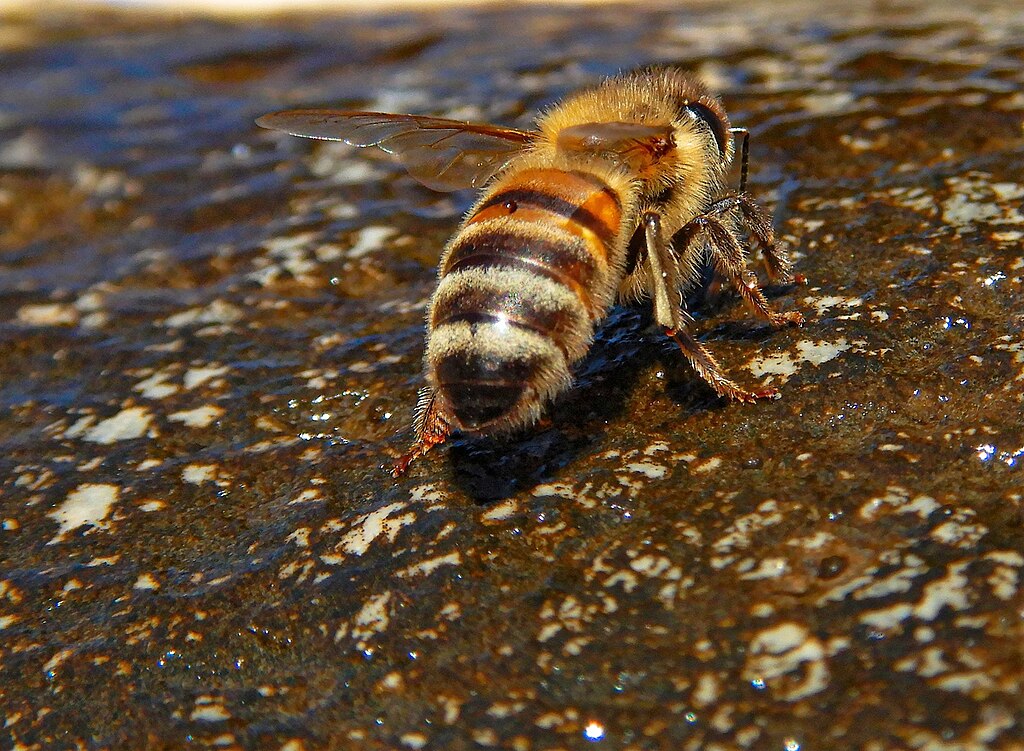
During the early evening hours, specialized foragers focus on collecting water, an often-overlooked but critical resource for hive function. Water serves multiple purposes: diluting honey for consumption by larvae, maintaining optimal humidity levels within the hive, and cooling the colony during hot weather through evaporation. Water collectors can transport approximately 25 milligrams per trip, often making multiple journeys to nearby sources. Unlike nectar or pollen collection, water gathering is particularly dangerous, with drowning being a significant risk as bees attempt to collect from the surface of ponds, streams, or morning dew. To minimize these dangers, some workers will function as living communication relays, directing others to safe collection sites with minimal risk. The amount of water collected fluctuates dramatically based on temperature, with collection increasing tenfold during heat waves when cooling becomes critical for brood survival.
Twilight Homecoming and Communication
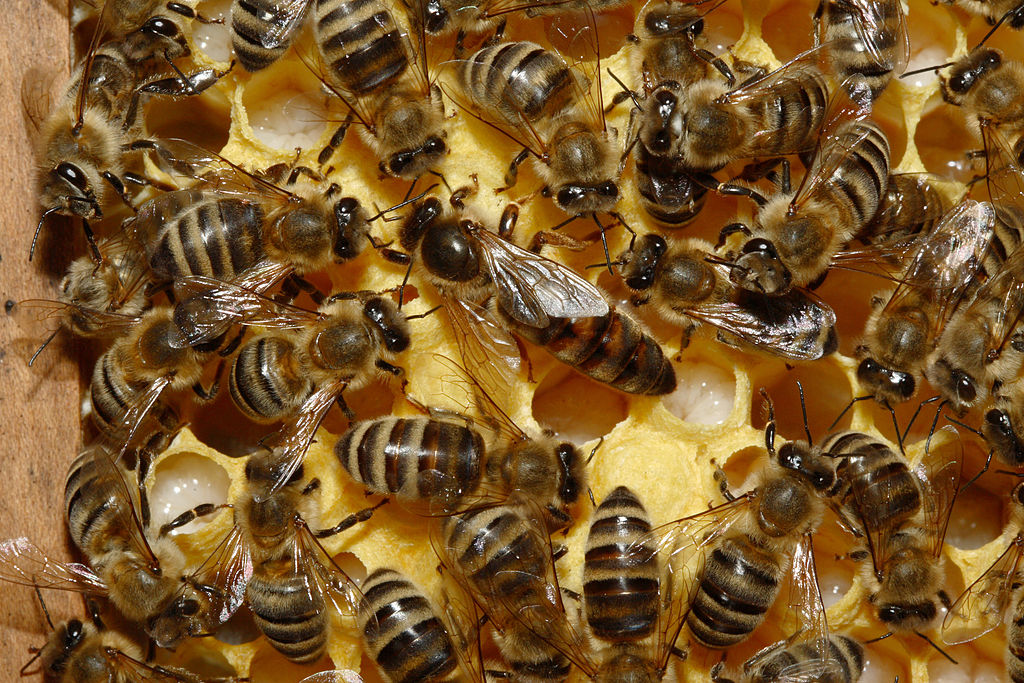
As daylight fades, foraging bees return to the hive, bringing the day’s final collections of nectar, pollen, and propolis (a resinous mixture used to seal unwanted openings in the hive). During this time, the famous “waggle dance” reaches peak frequency as successful foragers communicate the location of productive food sources to their hive mates. The intricate dance encodes precise information about distance and direction relative to the sun’s position, with the length and vigor of the waggle portion indicating the quality and abundance of the discovered resource. Other bees gather around the dancer, absorbing this information through touch and vibration detection rather than visual observation in the dim hive interior. These evening communication sessions effectively program the next day’s foraging operations, creating an efficient transition between shifts. The hive becomes a bustling information exchange center where data about food sources within a 5-mile radius is processed and prioritized.
Night Shift Security and Ventilation

Contrary to popular belief, the hive never truly sleeps, with dedicated workers maintaining essential functions throughout the night. Ventilation bees continue the critical task of temperature and humidity regulation, positioning themselves strategically throughout the hive with their wings beating at 250 strokes per second to circulate air. The night security detail remains vigilant against nocturnal predators such as skunks, raccoons, and certain wasp species that may attempt to raid the colony under cover of darkness. Inside the darkened hive, workers continue the never-ending task of cleaning cells and preparing them for the queen’s next egg-laying cycle. Young bees take advantage of the relative calm to continue developing their wax glands, building and reinforcing comb structures with the reduced traffic allowing for more efficient construction work.
Midnight Feeding and Care
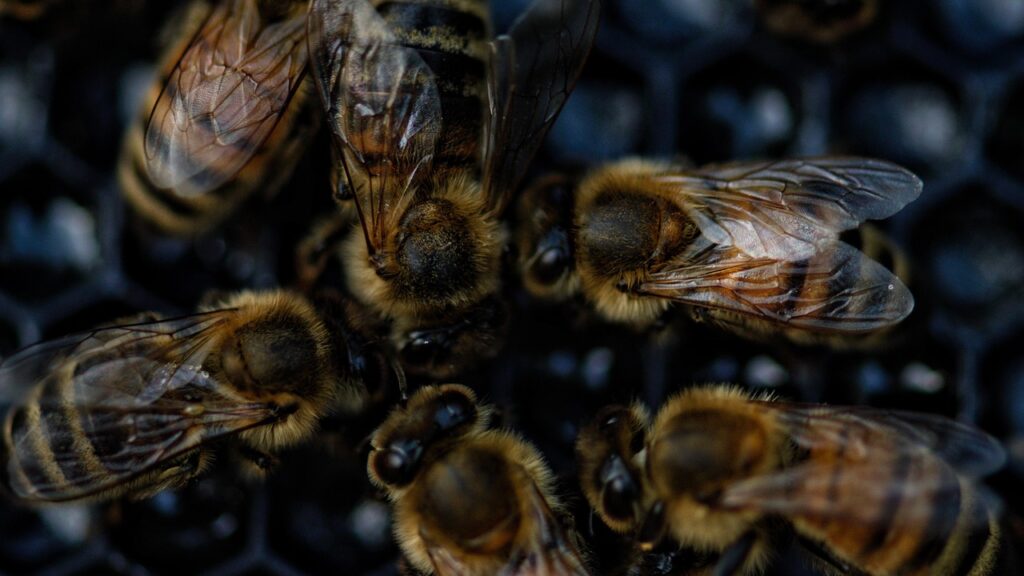
Around midnight, nurse bees perform another comprehensive feeding round for the developing larvae, which require constant nourishment regardless of the hour. The darkness presents no obstacle to this precision work, as bees navigate the hive primarily through touch, vibration, and pheromone detection rather than sight. During these quiet hours, attendant bees also provide specialized care to the queen, feeding her royal jelly and removing her waste to ensure her egg-laying capacity remains uninterrupted. Some workers engage in propolis application, using this antimicrobial resin to seal small cracks and sterilize surfaces within the hive – a natural form of preventative healthcare for the colony. The careful distribution of workers across various nighttime tasks ensures that the colony’s development continues unabated throughout the 24-hour cycle, with no true downtime in the beehive operation.
Pre-Dawn Preparation
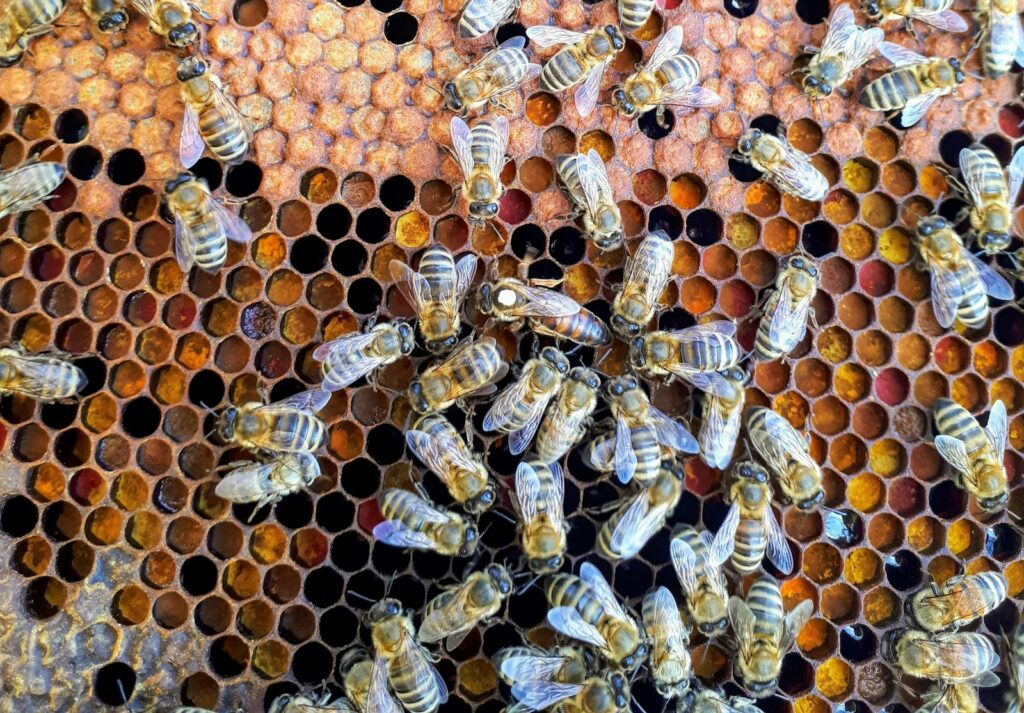
As the night transitions to early morning, around 4:00 AM, the hive begins preparing for another day of intensive foraging and production. The first workers to stir assess overnight temperature changes and adjust clustering behavior accordingly, ensuring the brood remains at the optimal development temperature. Food stores are evaluated, with information about dwindling supplies communicated through pheromones that will influence the day’s collection priorities. The queen’s egg-laying area is prepared, with cells cleaned and polished to receive the next cycle of eggs – approximately 1,500-2,000 per day during peak season. Workers who will serve as the day’s first foragers consume substantial honey meals, converting approximately 8 million flowers’ worth of nectar into the energy needed for their morning flights.
The Ultimate Work Ethic: Could You Handle It?

The life of a worker bee represents perhaps nature’s most extreme example of dedication to community over individual needs. With a lifespan of just 6-7 weeks during active seasons, worker bees literally work themselves to death, with wing deterioration being a common final limitation. They operate on minimal rest, taking only short periods of relative inactivity rather than true sleep as we understand it. A worker might fly the equivalent of twice around the world in her lifetime, visiting approximately 100,000 flowers, yet producing only about 1/12th of a teaspoon of honey. Their selfless service extends to their final act – many workers die outside the hive when they can no longer contribute, reducing the burden on the colony. When considering this relentless schedule and total dedication to collective survival over individual comfort, one must wonder: how many humans could truly thrive under such demanding conditions?
Conclusion
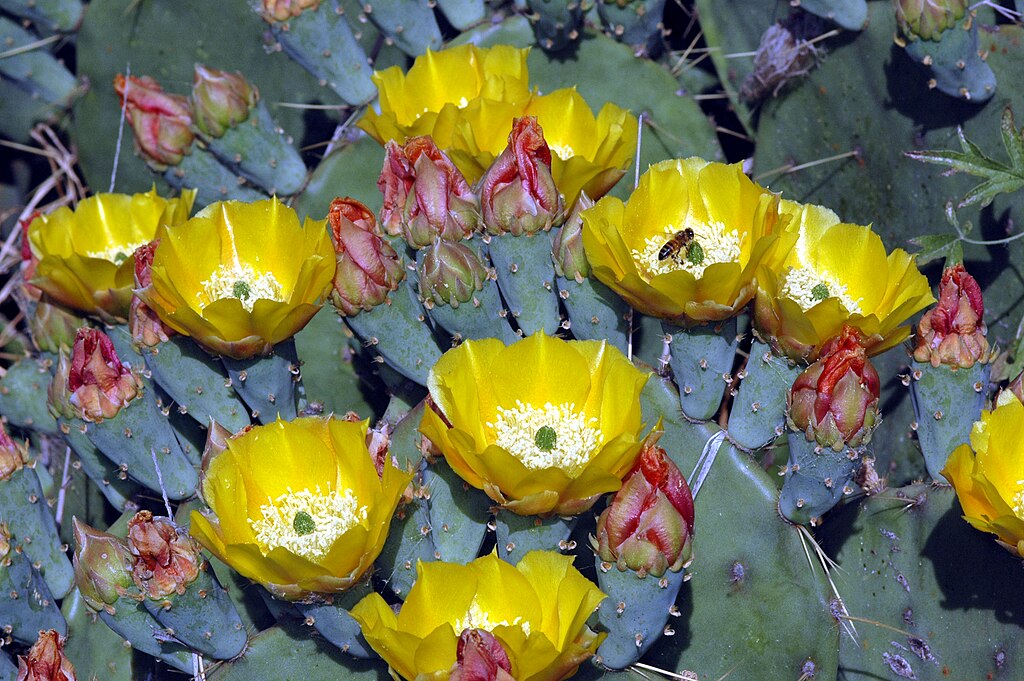
In conclusion, the life of a worker bee represents one of nature’s most remarkable examples of sacrifice, efficiency, and collective purpose. Their 24-hour cycle of continuous labor ensures the survival of their colony and, by extension, supports the pollination services that maintain our ecosystems and food supply. While we may marvel at their industriousness, few humans could maintain such an intense work schedule without the breaks, weekends, vacations, and personal time we’ve come to expect. The next time you enjoy a spoonful of honey or admire a flowering garden, take a moment to appreciate the tireless workers who make it all possible – operating on a schedule that would exhaust even the most dedicated human worker.

